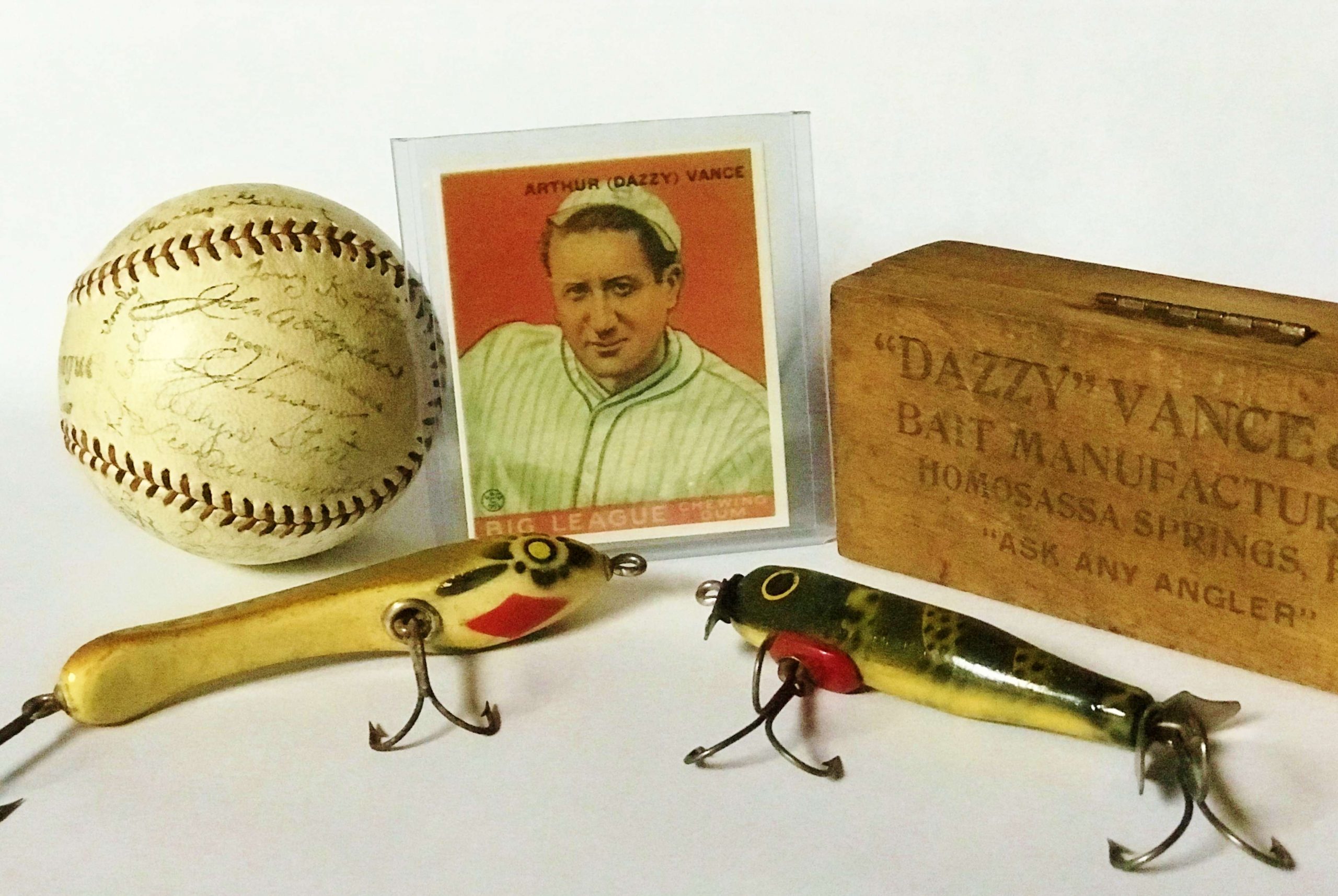
In our sport, the “Strike Zone” is the place where a bass is most likely to attack a lure. In baseball, it’s where every player, umpire and fan focuses their attention as the ball crosses home plate.
For some, the two interpretations can have equal significance.
Take big league baseball player Arthur “Dazzy” Vance, for example — the Hall of Fame pitcher. Vance loved fishing and baseball equally, and he made finding the strike zone in both his preoccupation.
In the early part of his career, Dazzy moved from team to team in both pro and semi-pro leagues. He eventually found some stability in 1917 with the New Orleans Pelicans — a semi-pro team that was part of the Southern League. He remained there until 1922 … when he finally got the call he had long been waiting for.
Through a forced, combined deal that included Pelican’s catcher Hank DeBerry, the Brooklyn Robins (later becoming the Dodgers) reluctantly bought out Vance’s contract. Unlike DeBerry and other young recruits, Vance was 31 years of age when he finally secured his spot in the big leagues.
Aware his age was working against him, Dazzy quickly found a way to beat the odds. Through the help of a supportive coaching staff, Vance was able to tame his wild fastball and develop a reliable curveball — two pitches that soon brought him fame.
In 1924, he achieved a record 24 wins, seven losses — striking out 262. He was named the National League’s “Most Valuable Player” that year — besting Cardinal’s homerun hitter, Roger Hornsby for the title. (Hornsby, as many baseball fans know, posted a .424 batting average — a modern record that stands to this day.)
Pitching to anglers
Shortly after receiving the league’s MVP award, Vance became baseball’s highest paid player — knocking down a whopping $45,000 per year. That was big money back then, and Vance was looking for ways to invest it.
Throughout his pro career, Dazzy made Homosassa Springs, Fla., his permanent residence. There he could unwind from the pressures of professional baseball, while wetting a line for largemouth bass and the many species of saltwater gamefish inhabiting Florida’s Gulf Coast.

Wanting to profit from his passion for fishing, Vance partnered with noted lure designer Paul Manon to form the Dazzy Vance Bait Manufacturing Company. Vance provided his endorsement and the necessary start-up funds; Manon handled the design work and day-to-day operations.
Among their most notable lures were the “Tampa Two Thousand,” “Sea Hopper” and “Angle Frog.” These were painted in a variety of colors and patterns to tempt both bass and various inshore saltwater fish — like snook, redfish and trout.
Interestingly, the company packaged their lures individually in small wooden boxes made of cedar — a practice of high-end lure manufacturers decades earlier. It’s likely the boxes were sourced from nearby Tampa, which was home to a thriving tobacco industry — where cedar boxes were commonly used in bulk packaging by cigar distributors.
Sadly, through an unfortunate turn of events, Dazzy Vance Bait Manufacturing Company folded after Paul Manon was killed in an automobile accident … less than a year after forming the company. Following that, investors from Tampa acquired the remaining assets and reformed it as the Tampa Bait & Tackle Company.
Although Dazzy’s involvement in lure production was short-lived, he did gain considerable notoriety as an angler — recognized primarily for his skills with artificial lures in saltwater. In 1955, however, Vance received the most important call of his career. He was inducted into the National Baseball Hall of Fame.
Vance died in 1961from a heart attack at his home in Homosassa Springs. He was 69 years old.
Special thanks to Ed Bauries for lending a photo of his outstanding collection of Dazzy Vance lures, and to Bill Stuart, Doug Brace and Russ Riddle for their efforts in researching the Dazzy Vance Bait Company.


